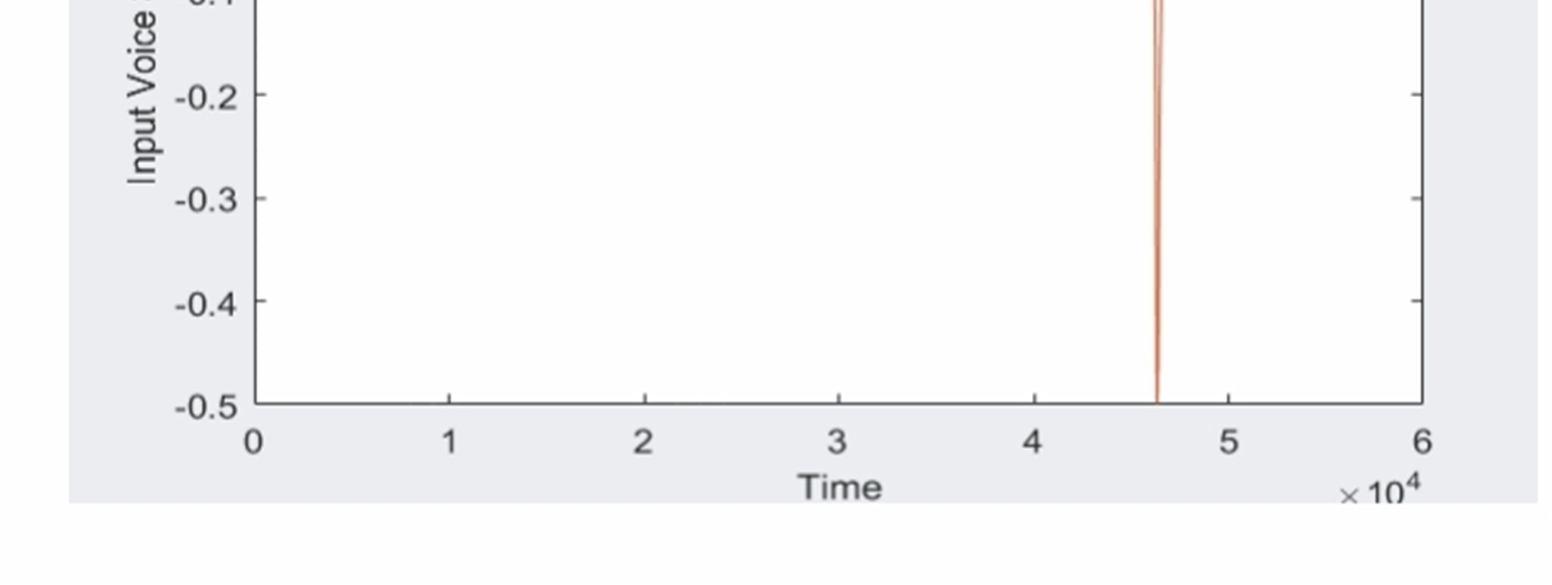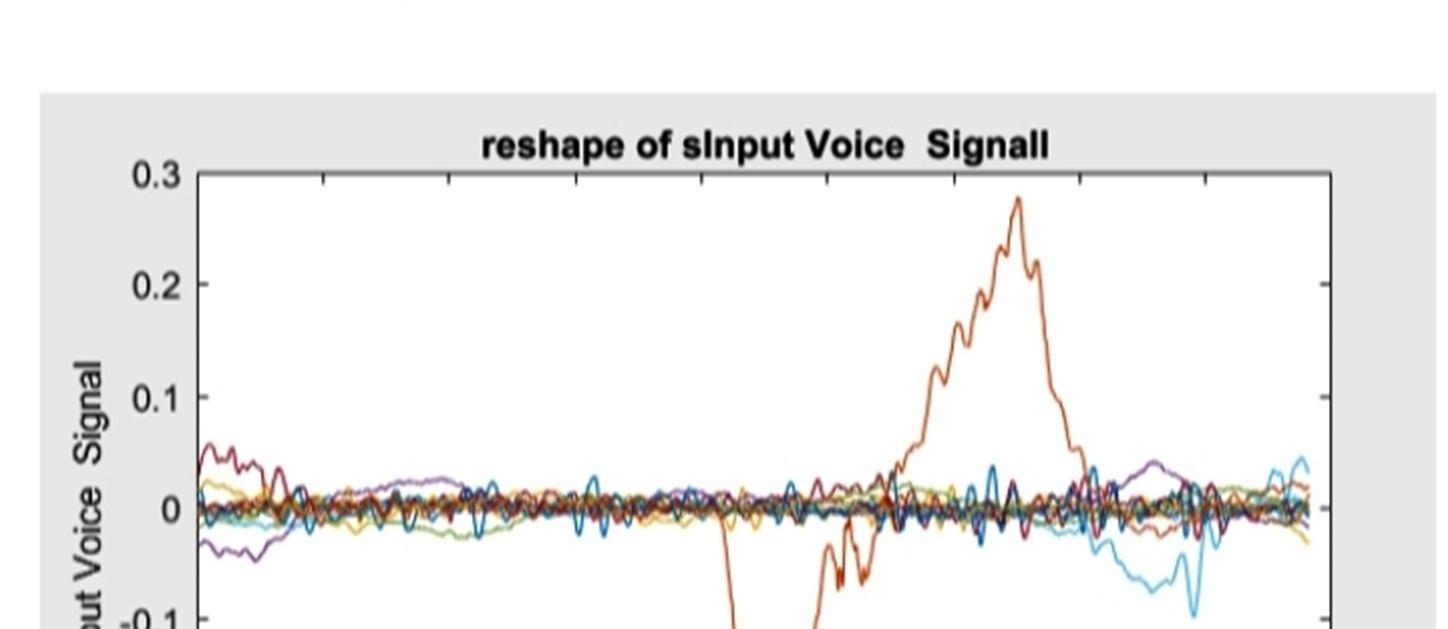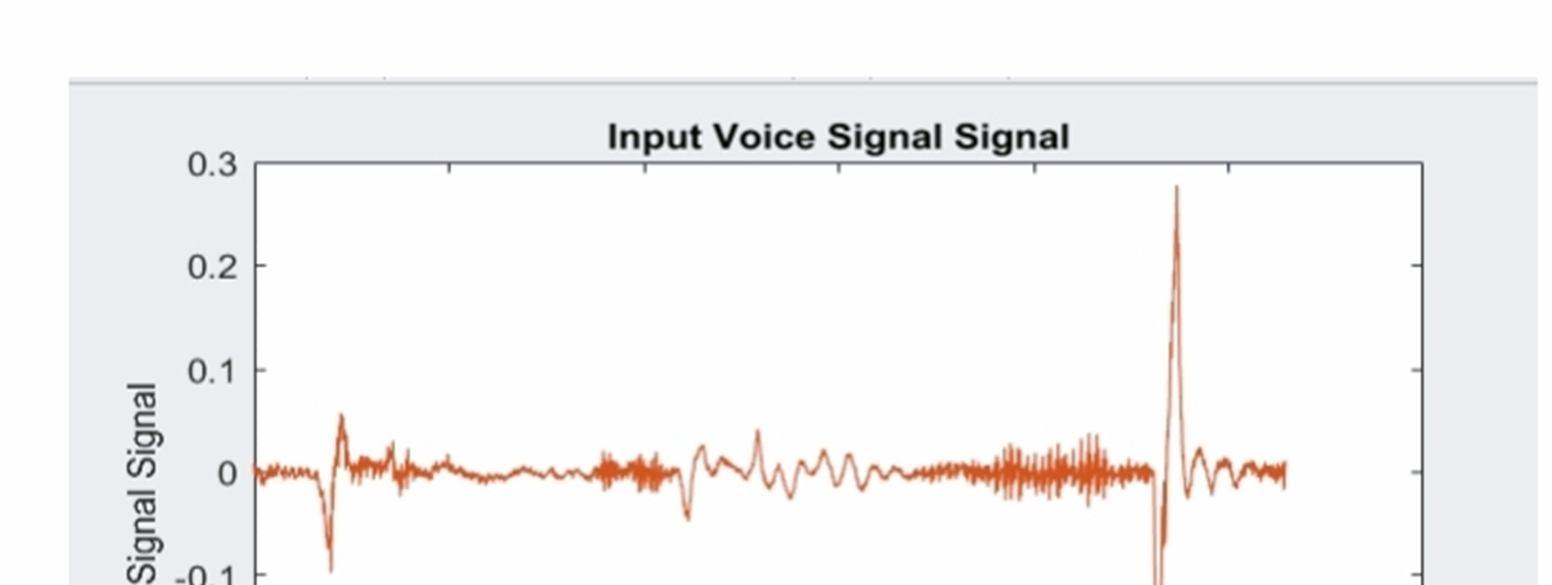
ISSN: 2321 9653; IC Value: 45.98; SJ Impact Factor: 7.538 Volume 10 Issue XI Nov 2022 Available at www.ijraset.com



ISSN: 2321 9653; IC Value: 45.98; SJ Impact Factor: 7.538 Volume 10 Issue XI Nov 2022 Available at www.ijraset.com

Abstract: The advanced dispatches world is upset talking further naturally by using hands free this help the mortal being to talk more confidently without holding any of the bias similar as microphones or telephones. This paper describes an indispensable system of estimating signals corrupted by cumulative noise or hindrance. Aural echo cancellation problem was bandied out of different noise cancellation ways by concerning different parameters with their relative results.
In this project we used voice signal for the input process then we can add some echo and remove noise to the voice signal. After that we can go with different applications for the voice signal. Here we used filter steps to remove the noise from the input voice signal. Here we used filter steps to remove the noise from the input voice signal.
Keywords: echo, Signal processing, Matlab
The arrival of telephony echoes has been a problem in communication networks. The most important factor in echoes is called end to end detention, which is also known as quiescence. Quiescence is the time between the generation of the sound at one end of the call and its event at the other end.

Echo is the reflected dupe of the voice heard some time latterly and a delayed interpretation of the original sound or electrical signal is reflected back to the source. Echo is a natural problem which substantially occurs in PSTN( Public Switching Telephone Network).
Echo occurs in analogy part of a telecommunication system. Echoes of our speech are heard as they're reflected from the bottom, walls and other bordering objects.
1) Franzen, J. Fingscheidt, Deep Residual Echo Suppression and Noise Reduction ,May 2022: A Multi Input FCRN Approach in a Hybrid Speech Enhancement System. Deep neural network (DNN) based approaches to acoustic echo cancellation (AEC) and hybrid speech enhancement systems have gained increasing attention recently, introducing significant performance improvements to this research field. Using the fully convolutional recurrent network (FCRN) architecture that is among state of the art topologies for noise reduction, we present a novel deep residual echo suppression and noise reduction with up to four input signals as part of a hybrid speech enhancement system with a linear frequency domain adaptive Kalman filter AEC.
2) Ivry, Israel Cohen, Berdugo, Deep Residual Echo Suppression with A Tunable Tradeoff Between Signal Distortion and Echo Suppression, June 2021. we propose a residual echo suppression method using a UNet neural network that directly maps the outputs of a linear acoustic echo canceler to the desired signal in the spectral domain. This system embeds a design parameter that allows a tunable tradeoff between the desired signal distortion and residual echo suppression in double talk scenarios.
3) Halimeh, M.M.Haubner, T.Briegleb, A.,Schmidt, Walter Kellermann, Combining Adaptive Filtering and Complex valued Deep Post filtering for Acoustic Echo Cancellation, June 2021. we introduce a novel approach to noise robust acoustic echo cancellation employing a complex valued Deep Neural Network (DNN) for postfiltering. In a first step, early linear echo components are removed using a double talk robust adaptive filter. The residual signal is subsequently processed by the proposed post filter (PF). Due to its complex valued nature, the PF allows to sup press unwanted signal components without introducing distortions to the near end speaker. For training and evaluation, we exclusively use data from the ICASSP 2021 AEC challenge. Exploiting only a moderate amount of training data
ISSN: 2321 9653; IC Value: 45.98; SJ Impact Factor: 7.538 Volume 10 Issue XI Nov 2022 Available at www.ijraset.com




The acquisition is the process of converting the physical phenomenon we call sound into a form suitable for digital processing, the representation is the problem of extracting from the sound information necessary to perform a specific task, and the storage is the problem of reducing the number of bits necessary to encode the signals. By applying pre process the given audio signal sis reshaped. Pre process means The envelope outlines the highest and lowest points (dB) of an audio signal. This is one part of the larger preprocessing objective: to quantify the physical properties of an audio signal. There are several measurements, such as the sample rate (n data points per second), amplitude (dB), frequency (Hz) . After reshaping the audio signal we will add noise by guassian noise by signal to noise ratio to the reshaped audio signal to remove the noise and echo very accurately from the given input audio signal . For the applied noise signal we apply median filters in which Median filtering is a nonlinear operation often used in image processing to reduce "salt and pepper" noise. A median filter is more effective than convolution when the goal is to simultaneously reduce noise and preserve edges. After then we apply wavelet transformation with discrete cosine transformation to both input signal and the reshaped noise signal . Here, Wavelet transforms are mathematical tools for analyzing data where features vary over different scales. For signals, features can be frequencies varying over time, transients, or slowly varying trends. For images, features include edges and textures. Again we apply the median filter for the wavelet transformed signals to remove the noise better and accurately from the input signal. Here we take low pass filter and high pass filter while applying the wavelet transformation and we take the output based on these low pass and high pass filter .


ISSN: 2321 9653; IC Value: 45.98; SJ Impact Factor: 7.538 Volume 10 Issue XI Nov 2022 Available at www.ijraset.com



The result of the noise reduction and echo cancellation system is shown in below
Fig: Input voice signal

Fig: Reshaped Signals


ISSN: 2321 9653; IC Value: 45.98; SJ Impact Factor: 7.538 Volume 10 Issue XI Nov 2022 Available at www.ijraset.com





Fig: Signal after Noise applied
Fig: Signal after applied Median filter to Noise based signal



ISSN: 2321 9653; IC Value: 45.98; SJ Impact Factor: 7.538 Volume 10 Issue XI Nov 2022 Available at www.ijraset.com







Fig: Input signal after applied Median filter
Fig: Applied Wavelet Transformation for signal
Factor 7.894 |
ISSN: 2321 9653; IC Value: 45.98; SJ Impact Factor: 7.538 Volume 10 Issue XI Nov 2022 Available at www.ijraset.com


Fig: Signal after applied filter with Low pass filter





Fig: Signal after applied filter with High pass filter

ISSN: 2321 9653; IC Value: 45.98; SJ Impact Factor: 7.538 Volume 10 Issue XI Nov 2022 Available at www.ijraset.com

We are facing problems with improper telecommunication signals. So we should remove the noise from the signal. The main application of the project is to remove the noise from the audio signal using filtering. Using this we can easily remove the noise using median filter steps. This type of problems facing more in telecommunications .So, we can remove that echo based noise using filters.The experiment was completely a software approach without utilizing any DSP hardware components. The algorithm was capable of running in any pc with MATLAB software installed. This technique is faster and provides almost perfect results for canceling acoustic echoes without clipping of the reference speech signals. The audio of the output speech signals were convincing and satisfactory.
[1] Franzen, J. Fingscheidt, Deep Residual Echo Suppression and Noise Reduction: A Multi Input FCRN Approach in a Hybrid Speech Enhancement System. In Proceedings of the IEEE International Conference on Acoustics, Speech, and Signal Processing (ICASSP), Singapore, May 2022.
[2] Ivry, A.Cohen, I.Berdugo, Deep Residual Echo Suppression with A Tunable Tradeoff Between Signal Distortion and Echo Suppression. In Proceedings of the IEEE International Conference on Acoustics, Speech, and Signal Processing (ICASSP), Toronto, Canada, June 2021.
[3] Halimeh, M.M.Haubner, T.Briegleb, A.,Schmidt, A.Kellermann, Combining Adaptive Filtering and Complex valued Deep Post filtering for Acoustic Echo Cancellation. In Proceedings of the IEEE International Conference on Acoustics, Speech, and Signal Processing (ICASSP), Toronto, ON, Canada, June 2021.
[4] Westhausen,N.L.Meyer,Acoustic Echo Cancellation with the Dual Signal Transformation LSTM Network. In Proceedings of the IEEE International Conference on Acoustics, Speech and Signal Processing (ICASSP), Toronto, ON, Canada, June 2021.
[5] Pfeifenberger, L.Pernkopf, Nonlinear Residual Echo Suppression Using a Recurrent Neural Network. In Proceedings of the Inter speech, Shanghai, China, October 2020.
[6] Kim, J.H.Chang, Attention Wave U Net for Acoustic Echo Cancellation. In Proceedings of the Inter speech 2020, Shanghai, China, October 2020.
[7] Luo, Y. Mesgarani, N. Conv TasNet, Surpassing Ideal Time Frequency Magnitude Masking for Speech Separation. IEEE/ACM Trans. Audio Speech Lang Process. June 2019.
[8] Giri,R.Isik, U.Krishnaswamy, Attention Wave U Net for Speech Enhancement. In Proceedings of the IEEE Workshop on Applications of Signal Processing to Audio and Acoustics (WASPAA), New Paltz, NY, USA,October 2019.
[9] H.Zhang, H.Wang, Deep Learning for Acoustic Echo Cancellation in Noisy and Double Talk Scenarios. In Proceedings of the Interspeech 2018, Hyderabad, India, September 2018.

